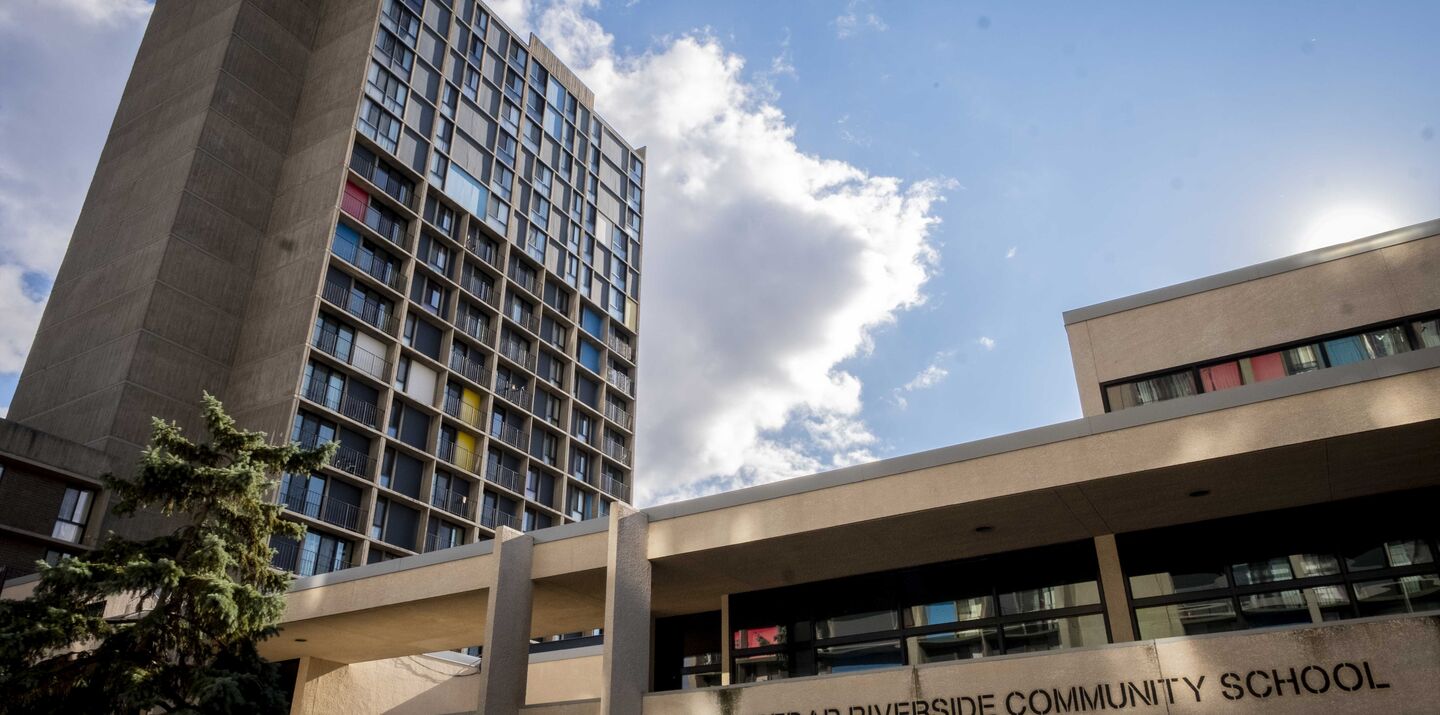
When Parents Won't Give Up
A group of Minneapolis parents with roots in Somalia are getting a distinctly American lesson in how education systems work, and just how much strategizing and speaking out it takes to be heard.
Just east of downtown Minneapolis, Cedar Riverside Plaza rises from the concrete, a 1,300-unit apartment complex built in the blocky brutalist style of the early 1970s, decorated with once-vibrant red, yellow, and blue panels still visible for miles.
On the ground floor is Cedar Riverside Community School, founded in 1993 as the fifth charter school in Minnesota and one of the first in the nation. Since opening its doors, this charter school has been, in effect, the neighborhood school for a large community of families who live in the apartments above it. The area is called Little Mogadishu after the capital of Somalia, the country from which many of them fled, escaping a merciless civil war.
For years, this tightly-knit community of parents were proud to send one child after another to the school downstairs that they could call their own. For most of those years, they were happy with their children’s education and felt heard and welcomed.
That changed in late 2018, when parents say a new leader upset the culture of the school almost overnight. They say the new executive director (equivalent to a principal), with support over time from a board of directors, created an atmosphere they describe as authoritarian and intimidating. Teacher and staff firings and turnover quickly followed. Parents soon realized they had two choices. They could pull their children out and enroll them elsewhere, or they could become activists. Reluctantly but together, many chose the latter: to fight for their neighborhood school.
“The school needs to be saved. The community needs to be saved,” says Ayan Jama, who worked as a nurse and parent liaison at the school for 20 years, and who has emerged as a parent leader. “I crossed the ocean. I sacrificed my life to make sure my children are treated fairly.”
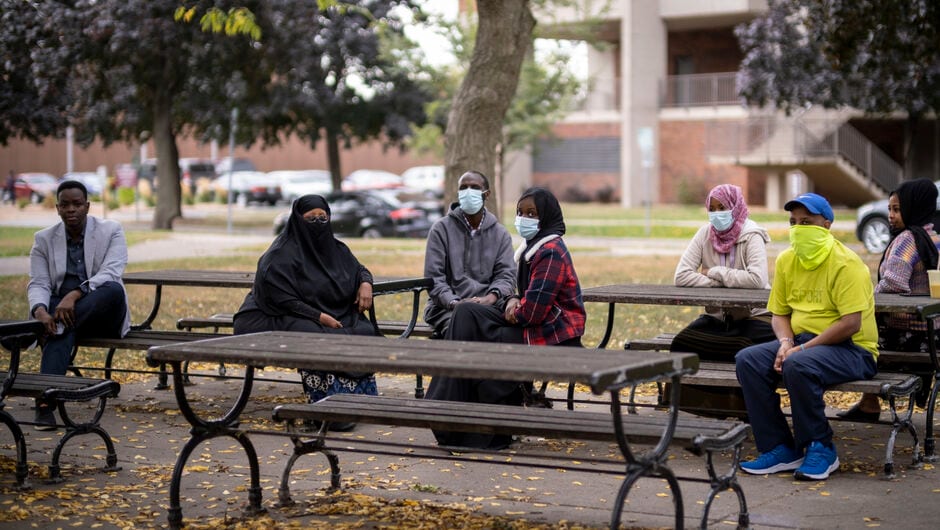
This is a story about parents doing exactly what so many education and political leaders urge them to do and proclaim they have the power to do: organize collectively and raise their voices to influence the culture and practices at schools that aren’t delivering an excellent education. It’s also about the ways students can lose months, even years, in dysfunctional schools because of the rules and practices dictating how school systems operate. These are rules that frustrate community power and allow schools to linger in a state of mediocrity or worse, even when evidence of dysfunction is clear.
Since this past February, Jama and a small group of other parents at CRCS (the school’s shorthand name) have been meeting almost weekly to try to take back their school from the people they perceive to be destroying it. This includes the executive director, who is running two businesses on the side with his partner: one offering psychic readings (under the name of 2GuysInTheKnow LLC), the other a shop that sells crystals and tarot cards.
In June, nearly 50 parents, claiming to represent about 90 enrolled students (nearly two-thirds of the school’s student body), signed a three-page petition they delivered to their school’s charter authorizer, a longtime community development non-profit called Pillsbury United Communities (also known as PUC). Parents demanded the resignation of the executive director and the chair of the board. They expressed dire dissatisfaction with educational outcomes and complained of constant teacher turnover; a disrespectful attitude toward parents; a board void of accountability; improper management; and a pattern of all-white board and school level leadership.
They don’t lack evidence. Since the start of the 2018-19 school year, students have witnessed an exodus of veteran teachers. In less than two years, 49 staff members (including 28 teachers) at a school that started that school year with 165 students, were fired, quit, or didn’t have their contracts renewed. At least 12 of the staff members who left were Somali American. Through various maneuvers, the board held no elections for about two years, though seats have been filled with teachers hired by the executive director.
The authorizer, PUC, has issued the school four “Notices of Concern” covering a multitude of grievances and one next-level “Notice of Deficiency” for failing to investigate “unprecedented” parent complaints. Compared to the handful of formal complaints the authorizer receives in a typical year (for a portfolio of 20 schools), PUC has received close to 30 formal complaints about CRCS alone.
In spring of 2019, the last year for which test scores are available, about 21% of CRCS students scored proficient on the state math assessment and about 33% scored proficient in reading, according to the Minnesota Department of Education. The state did not administer tests last year, but parents say they’ve seen a decline. When other schools scrambled to issue tablets to students and ramp up online learning at the start of COVID-19, CRCS sent home worksheets, a move the executive director says ensured equity.
As this issue was going to print, the charter authorizer, spurred on by the Minnesota Department of Education, was stepping up its oversight by requiring the school to produce an improvement plan—a more serious intervention that could lead to closure.
In the lead-up, the school’s leadership followed familiar patterns. It called a board election for late October with several seats open for parents and community members. On October 6, the school gave public notice to parents through Facebook, in English (many parents need a Somali interpreter), followed by a text message on October 9. The deadline to state an intention to run was one business day later on Monday, October 12. Later in the month, they delayed the election indefinitely and said they hoped to attract a wider slate of candidates.

Demographers estimate that nearly 100,000 first- or later-generation Somali Americans live in Minnesota, making the state home to the largest Somali-speaking community in the nation. Somali businesses dot Twin Cities thoroughfares, often near mosques and other cultural centers. A Somali American teacher became the state’s 2020 teacher of the year. Somali American politicians sit at all levels of government, including U.S. Rep. Ilhan Omar, who represented the Cedar-Riverside neighborhood in the state legislature before her election to the U.S. Congress.
Still, Somali American kids have long fought to belong, their parents say. Their struggles show up in painful ways, like a recent opioid epidemic in the community and a surge in homelessness and mental health crises. Pathways to financial stability are elusive: Even as employment rates among Somali Minnesotans are comparatively high, 80% live below the federal poverty line.
Mustafa Diriye is a Minneapolis community organizer and parent advocate. Recently, he began working with a newly formed group called the Minnesota Parent Union, which is loosely affiliated with the National Parents Union that launched in January 2020 as “a gathering space for community conversations and a megaphone for community solutions.” He began attending meetings of the CRCS parents and advised them on writing complaints and assembling the petition they submitted to the charter authorizer.
“I started teaching them their power, letting them know they have power and can’t take no for an answer,” Diriye says.
An animated man with a neatly trimmed, graying beard, Diriye is deterred by very little. He was 17 years old when the civil war in Somalia broke out in 1991. Within a week, three of his older siblings disappeared. He walked the streets every morning in search of them, following leads on bodies that turned up in ditches or along roadsides. “Those weeks, months, changed my entire philosophy. You learn how to never give up, to be patient, to keep your composure.”
Eventually, Diriye fled to a refugee camp in Kenya before moving to the United States, where he graduated from college. About CRCS parents, he says, “We all grew up in refugee camps, patrolling to protect each other. We learned how to organize, how to stand up for each other. Those are our skills.”
On a breezy Thursday afternoon in late summer, I joined about a dozen parents for one of their regular, outdoor organizing meetings at a park in their Cedar-Riverside neighborhood. Sometimes the Thursday meetings have an agenda or a guest, like a recent organizer who spoke with parents about other public school options. But mostly, the parents get together to talk about latest developments—a phone call with CRCS’s authorizer about next steps, for example. And they speculate about why progress has been so slow in coming, and who’s looking out for their kids.
Ali Ali is the father of two CRCS students. On this Thursday, he sat at the end of a weather-worn picnic bench, listening and looking weary. Quietly, he said, “Something is wrong. Either our case is not strong or the minister of education is with the school, not with us. Something is not working.”
At the far end of the table, Hassan Osman stood under a tree in its last green of summer. His niece is a CRCS student, and he attends the parent organizing meetings on his sister’s behalf. “When a tree is fully grown, you cannot change it unless you cut it down. But when it’s young, when it’s still growing, you can direct it,” he said. “It’s like our crops are wasting in front of us, and we can do nothing about it.
“Everybody is trying but nothing is moving forward. Moms, kids, they try their best, but you don’t know what to do. So this time, I think, we have to do something. We have to do the impossible.”
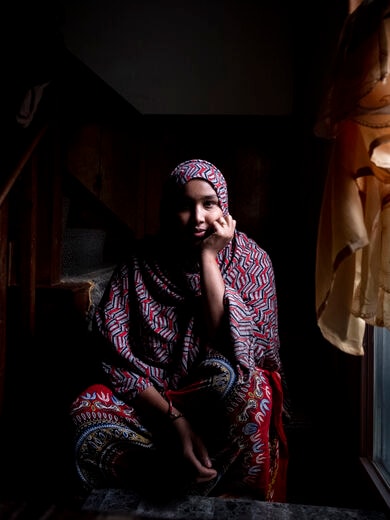
After about an hour of conversation, parents started to gather their children and walk home. The last to leave was Ayan Jama, who worked at CRCS while sending several of her children there, including her youngest who is now in sixth grade. Jama excelled in school while growing up, and was two months into a nursing career in Mogadishu when the civil war forced her to flee. School leaders characterize her as a disgruntled ex-employee with an ax to grind. (She is one of four Somali staff members who were fired or felt forced out of their jobs in the spring of 2020.) But parents see her differently—as a longtime leader in the community who will listen to them and communicate on their behalf.
The parents—many of whom have college degrees and enjoyed professional livelihoods before they came to America—say they want what most parents want: an academically rigorous education that will allow their children a fair shot at success, “to be fully American,” as one dad put it. And they want a school culture that lifts their children’s self-esteem and prepares them to thrive amid diversity.
One mother, Fadumo Abdullahi, recalled her kindergartner telling her he had to stand by the wall because he was asking too many questions. “Yes, my son asks a lot of questions, I know that,” she says. “But that’s how he builds things.” she says.
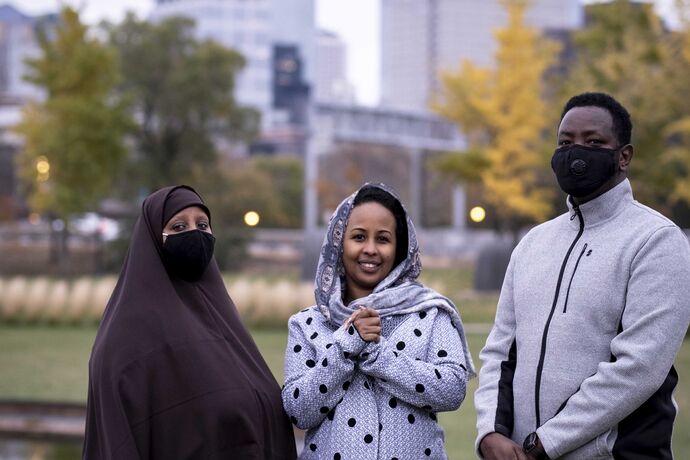
Minnesota has the fourth best charter school law in the country, as ranked by the National Alliance for Public Charter Schools, an advocacy group. But part of what the situation at CRCS reveals is how few options the law gives the charter authorizer to compel a school to do business differently, especially with any speed or urgency. Authorizers’ key power—their ability to shut a school down or refuse to renew its charter—is a comparatively blunt instrument.
For people who don’t have kids at CRCS, not renewing the charter might seem like the responsible option. What’s the good of an authorizer, after all, if it won’t exercise the only real power it has?
Antonio Cardona, who has overseen PUC’s charter school office for more than a decade, hesitates. Consider, he says, that the school has been open for 27 years. It is the literal foundation of Cedar Riverside Plaza and serves a community where many parents work non-traditional hours, don’t drive, and benefit greatly by having a school to which they can walk. Many chose it in part for the fellowship of families who share the same language, culture, and experiences in America.
“We think it’s very important to have a school in that location,” he says.
Cardona is familiar with the families’ other school options, most of which are filled virtually to capacity or fail students in significant ways. At the Minneapolis public school zoned for Cedar Riverside Plaza, only about one in five students scores proficient in math, and a third in reading. At a popular public Montessori school in their bussing zone, proficiency rates are 72% for white children and 18% for Black children, according to Minneapolis School Finder. At another nearby option, with a demographically diverse student body, about 76% of white students are proficient based on test scores, compared to about 40% of Black students. And while students of color make up half of the student body at that school, 97% of the teachers are white.
Faced with unacceptable neighborhood schools and a school board out of alignment with their concerns, parents like those at CRCS look to a charter authorizer to enforce school quality. But Cardona says the law never granted authorizers that power. Instead, authorizers provide oversight—essentially the right to be nosy. And that works best when a school’s leadership offers transparency in good faith and seeks out supports, Cardona says. Still, he shoulders some of the responsibility for the school’s fracture. “We could’ve had a stronger intervention sooner.”

At the center of the parents’ anger is CRCS’s executive director Bert Strassburg, who was hired to lead the school in August 2018 after the board abruptly dismissed its previous executive director. Instead of taking a year to build staff morale and clarify the school’s mission under an interim director, as Cardona and PUC advised, the board brought on Strassburg. He’d previously been a principal in a Twin Cities suburb, the superintendent of schools in a town serving about 650 students, and the interim executive director of a suburban charter school that did not renew his one-year contract.
By Strassburg’s telling, everything that has happened at the school under his watch has been an effort to improve it. “When I started at CRCS, the board informed me that for years there had been a lack of accountability,” he says. So he says he laid out expectations and let go of teachers who did not meet them. In his first year, 11 staff members and 14 teachers left or lost their jobs—a number Strassburg calls “not uncommon in school turnaround efforts.” In the report of an October 2019 PUC site visit, he wrote that staff turnover provided “precisely the opportunity the school needs in order to make vital changes and evolve into the educational program that serves the community’s needs.”
Former teachers say Strassburg took a bad situation and made it worse. “I don’t think he understood the heart of the school,” says Michelle Jacobs, who taught at CRCS for 13 years and was a board member during Strassburg’s first year before she left and moved out of state. The school struggled administratively prior to his hire, she says, but there remained a deep trust between teachers and parents. “As teachers, we knew that if we didn’t have parents backing us, we didn’t have a school,” she says.
Jacobs and other former teachers say Strassburg came in like a wrecking ball. “There was never a coming together and asking, ‘What works here, and what doesn’t?’” she says. “There needed to be changes, but what happened were not the changes that were needed.”
Meanwhile, parents were pulling their kids. Fall enrollment numbers have not been released, but Cardona says at least one nearby charter school has seen sizable requests for transfer from CRCS. In formal complaints to PUC, parents described a systematic disregard for their concerns, characterizing school leaders as disrespectful, unprofessional, unresponsive, unhelpful, and insulting. Still, minutes of board meetings show that Strassburg and the board spoke about the progress made in parent involvement, student-centered learning, and social emotional growth.
At the school’s founding, the board of directors was formed to include a teacher majority. Teacher turnover at CRCS destabilized the board: Seats vacated by non-renewed teachers opened up positions to be filled with new hires (with the board eventually becoming all white except for two parent members). Though the board formed a parent partnership committee in May 2019, it has met only four times since, according to board minutes. Of 33 board meetings since the start of the 2018-19 school year, the two required parent members have been present only six times, according to board minutes, leaving key decisions to be made without parent input.
Strassburg says parent involvement has been key to his leadership. “I want every parent to know that their voices are valued and critical to the future success of the school,” he says.
Several parents interviewed for this story attended a February meeting with Strassburg where the conversation turned to a lack of teacher assistants in kindergarten classrooms and high teacher turnover in other grades. As parents spoke up, they said, Strassburg stormed out of the room. (He disputes this and says he left the meeting at its scheduled end time.)
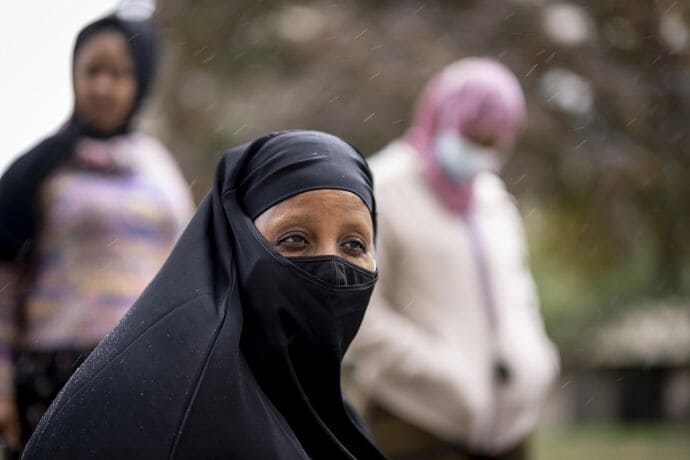
As parents have voiced specific, school-based frustrations, systemic barriers have remained opaque. Why is it, they ask, that they have to mount a months-long campaign just to get to a point where the charter authorizer requires an improvement plan that school leaders will now have months to develop?
By design, charter schools in Minnesota operate according to a contract between the school’s board and the state department of education, overseen by a third-party authorizer. Each authorizer operates with slightly different values, but overall they provide supports to schools and analyze progress toward goals. When a school does not meet the terms of its charter, or when it fails to make progress, the authorizer acts as a partner for getting the school back on track or, alternately, closing it down.
In Minnesota and most states, authorizers operate with carrots and sticks. Notices of Concern and Notices of Deficiency are an authorizer’s best sticks. The Notices of Concern that PUC has sent to CRCS cover territory from the make-up of its board, to a lack of culturally responsive practices, to teacher vacancies, falling enrollment, poor academic progress, and a refusal to investigate or even acknowledge parent complaints.
Cardona says the formal complaints PUC has received about CRCS “consistently identify a lack of cultural competency, bullying culture from leadership and board members, lack of responsiveness to parents, manipulative employment practices, and isolation of the school community and partners.”
When schools don’t respond to carrots, like offers of support, or sticks, like Notices of Concern, the authorizer has limited power to force the hand of a board or executive director. “This gets to the challenge we have as an authorizer,” Cardona says. "It's very difficult to create change through a series of letters, but that's the tool we have. That and closure." State laws vary, but authorizers typically cannot replace a school’s board or hire or fire its executive director.
Two Teach For America alumni, Katie Barrett Kramer (N.Y. ’98) and Dan Cooley (St. Louis ’06) have co-founded an organization dedicated to community-driven school change that has helped drive collaborative, not combative, turnarounds in charter schools. The Minneapolis-based School Leadership Project is grounded in the idea that the people—often parents—who are asking for change should be the ones to determine its character and direction.
Too often, Barrett Kramer says, school boards and leaders act as though parents don’t have the capacity to understand and collaborate on educational decisions. “That just isn’t true,” she says. Still, she says, it’s the rare school that supports parents on pathways to meaningful leadership. “The structures schools have that enable or govern parent involvement, like parent-teacher organizations, are almost exclusively structures that don’t give parents decision-making authority” over their child’s education, she says.
Jama says that’s at odds with what parents who grew up in Somalia expect. “Teachers were teachers, but when parents said something about their child’s education, teachers respected that,” she says. It’s the kind of cultural schism that she believes exacerbates parents’ frustration when not recognized.
Barrett Kramer adds that with the right approach, charter schools in Minnesota should provide one of the most democratic experiences parents have. Schools should invest in creating avenues for parents to understand how schooling works, how school governance works, and how parents can grow into those roles that directly impact their child’s experience. Instead, school leadership too often has come to mirror society’s tired divisions along lines of race and class.
Two schools in PUC’s charter portfolio went through The School Leadership Project’s community-driven turnaround process. After rocky transitions, both now boast improved outcomes and growing enrollment. “I would love to see [CRCS] go through that process,” Cardona says. But PUC can’t force the board to take it on. “It only works when you have the right people around the table.”
At many charter schools in the state, satisfied parents point to student outcomes exceeding those of surrounding district schools, particularly for Black, Indigenous, and other students of color. Erika Sass (L.A. ’01) is the co-founder of one of those schools, Northeast College Prep. “When we opened, we purposely looked for an authorizer who would hold us accountable,” she says, “and we have one of the most, if not the most, high-expectations authorizers.”
Cardona suggests that Minnesota should amend its charter law to give authorizers the power to replace board members and the executive director if certain criteria aren’t met. There should be a process, he says, by which the authorizer could take back or transfer the leadership of a school to an organization more qualified to meet the terms of the charter. (Versions of this are possible in places like Michigan and Nevada.)
Advocates for keeping authorizers at a distance argue that charter schools’ promise rests in hyper-local leadership and key decisions made by the people nearest their impact. To allow authorizers to become de facto superintendents would represent a step backwards from that original vision, they say. Still, when the processes in place to abate failure aren’t working, and the school board and authorizer can’t cooperate, what can be done?
Cardona says the situation at CRCS “plays into the tyranny of low expectations. The board and the administration just seem comfortable doing what they’re doing.” He adds, “Poor leadership is not illegal.”
In early October, after meeting with the director of charter schools for the Minnesota Department of Education, PUC directed CRCS school leaders to create a performance improvement plan—a step in the direction of closure that is significantly more consequential than a Notice of Concern.
In it, CRCS’s leadership must lay out remedies for a lack of academic rigor; a lack of cultural competency; a disregard of parent and community voice; paltry options for parent access and participation; and ongoing complaints of “toxic work relationships and bullying culture by the director and board members.” Additionally, PUC directed the board to hire a third party to investigate allegations from parents and teachers.
While school leaders “should’ve spent the summer fixing this,” Cardona says, he expects the school to take several months hiring the investigator and creating their plan. Even as Jama watches the clock tick, she is encouraged to see PUC step up the pressure. “As long as we see some improvement, there’s hope there,” she says. In the meantime, she’ll keep her daughter at the school and supplement her education from home. Many other parents are choosing the same, she says, for now.
“Each one of us sees this as our responsibility. We’re working together not to make trouble but to make things better for our students,” she says. “It’s our very root that we treat each other as brothers and sisters. We are one community and we cannot watch if someone is suffering. We’re in a boat. We’re going to sink together or we’re going to survive together.”
“It’s a part of who we are and how we’ve been raised. And it’s what we are trying to pass on to our children because we are on another journey now as a first generation in America.”
Sign up to receive articles like this in your inbox!
Thanks for signing up!
Content is loading...


